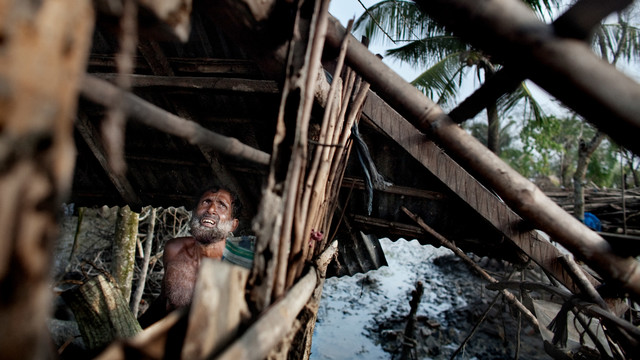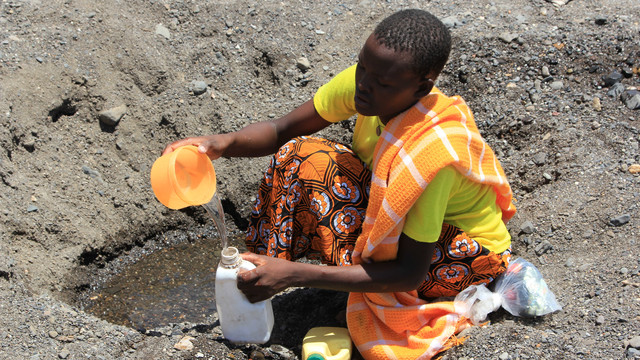Real climate ambition means switching to 'business unusual'
Leadership at the UN Climate Action Summit came from least developed countries and grassroots communities. Clare Shakya argues that supporting their efforts requires a shift away from business-as-usual.


Secretary-General António Guterres opens the UN Climate Action Summit 2019. Guterres called the summit to address the urgent need to tackle climate change and achieve the goals of the Paris Agreement (Photo: UN Photo)
When it comes to stepping up ambition on climate action, we should look to the poorest countries and communities. To those least responsible for this climate crisis. To those who are suffering the most from the impacts.
At the UN Climate Action Summit on 23 September, the least developed countries (LDCs) showed monumental leadership on the international stage, coming forward with commitments towards enhanced Nationally Determined Contributions (NDCs), long-term strategies and National Adaptation Plans (NAPs). They stood united behind their new LDC 2050 Vision for a net-zero, climate-resilient future.
The Small Island Developing States (SIDS) stepped up beside them, with their vision and national commitments from countries such as the Marshall Islands and Barbados.
Ambitious commitments from a few rich countries such as New Zealand and Denmark were welcome, and Ireland stood with the LDCs, pledging €1 million to support the LDC Initiative for Effective Adaptation and Resilience (LIFE-AR) that will drive the LDC vision forward.
The broad agreement that ‘business-as-usual' is not working was another sign of success – we need a rapid step change if we are to limit the climate crisis.
Big promises equal business-as-usual
Despite this, most wealthy countries failed to offer any hints of the ambition for emission reductions we need and the coal-powered emerging economies did not signal the end of coal. Everyone had new initiatives to announce, but they were overwhelmingly pledging to support the status quo: high-level commitments that lead to many meetings but little action on the ground.
Many donors promised to double their contributions to the Green Climate Fund, but we know from IIED’s research that the poorest countries struggle to access this finance through international partners. We need to move away from this type of externally driven, top-down and short-term support for developing countries’ climate responses.
What we wanted to see at the summit was a new way of working, stronger ambition, and united global leadership from wealthier countries – but we came away disappointed. There remains a lot to do before COP26 in Glasgow, when the Paris Agreement comes into effect.
From the grassroots to 'business unusual'
Outside the UN summit we saw strong, grassroots communities demonstrating practical solutions to climate change impacts.
At the Building a Resilient Future event on 22 September, the Huairou Commission, a coalition of grassroots women leaders, Slum/Shack Dwellers International, and WIEGO, the alliance of informal workers, were among the groups highlighting their climate innovation. They held discussions with representatives from other grassroots movements of indigenous peoples, forest and pastoralist communities about how to move forward faster.
Across the world people are coming together to demand climate justice and the Global Climate Strike was a highlight: grassroots organisations marched alongside leaders from the LDCs, young men and women, research institutions and NGOs, all calling for change. Voices are uniting.

One development bank responded to the call for action: the Asian Development Bank announced it is building a partnership to help communities organise. It will work with governments to help them understand why bringing the whole of society with them to respond to climate change will enable them to step up ambition. Someone heard the voices and listened.
What does 'business unusual' look like?
Local communities are at the heart of change. To move away from top-down, business-as-usual approaches, we must adopt new ways of working and support them. Bringing grassroots groups and LDCs to the table to discuss scaling up local finance and action is a start, but big funders still don’t fully understand what it means to change to ‘business unusual’.
Many still think that their existing initiatives are enough. They are not.
IIED’s 'Money where it matters' framework sets out the principles for getting more finance to local institutions to support vulnerable communities' priorities for tackling the drivers of poverty, resource degradation and climate change.
Such a framework is critical to 'business unusual’ and for supporting the whole of society on climate action, locally driven adaptation, mitigation governance, planning, financing with strong accountability, and learning from what works.
Back at the summit, Ireland, the UK, Norway, Germany, Austria and Finland expressed their intention to sign a partnership compact with the LDCs in support of their 2050 vision. This support will be vital to ensure that the vision is implemented at national and local levels and, already, six LDC nations are ready to begin their plans for business unusual.
These countries are in the driving seat of investing in their own needs and priorities for more effective climate action.
We hope other countries – both developed and developing – will follow suit, lifting the torch to take forward a new, more effective way of working towards a climate-resilient future.
Marek Soanes and Sarah McIvor also contributed to this blog.




